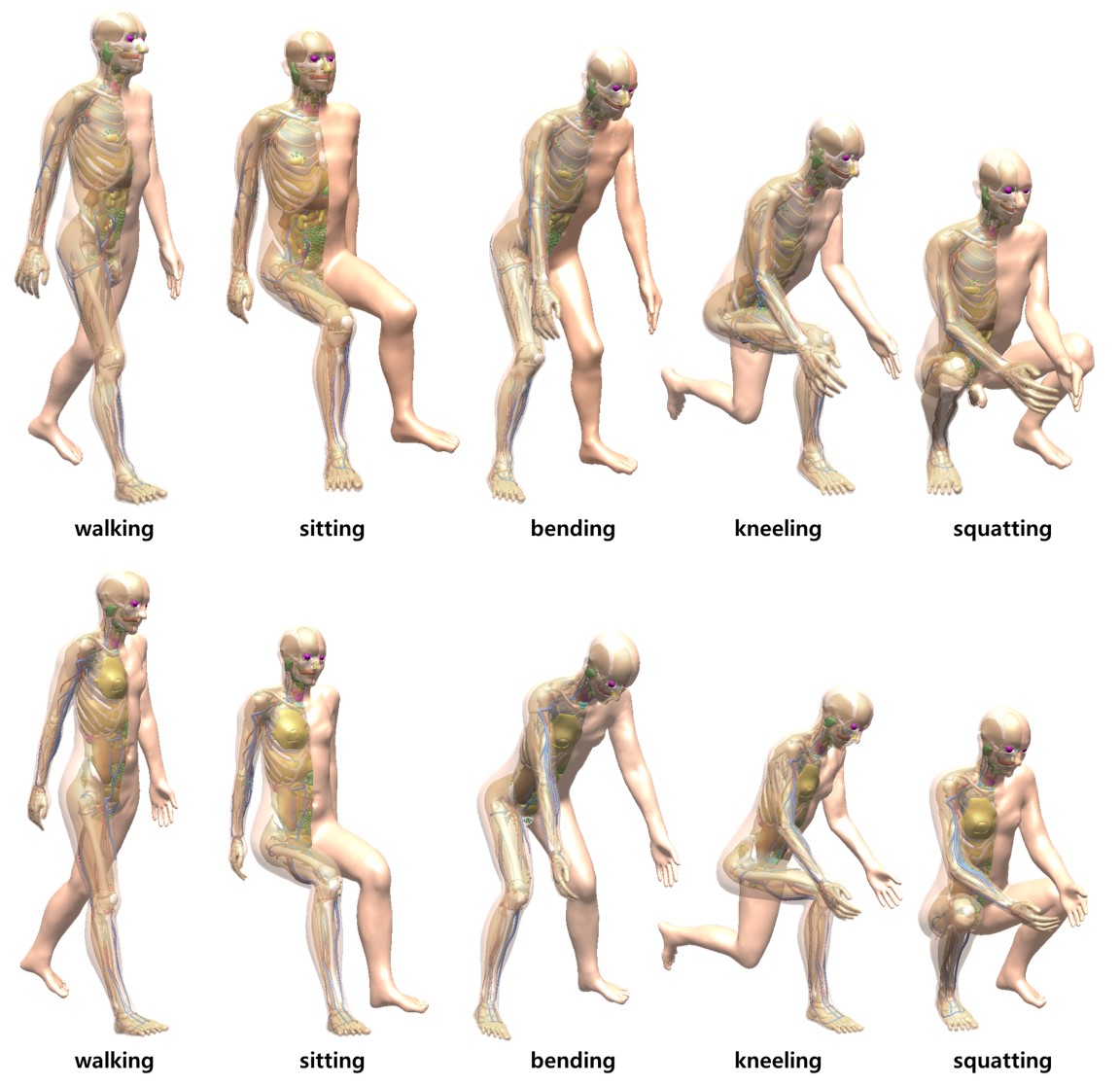글로벌 연구동향
방사선방호 및 안전
- [Radiat Environ Biophys.] Dose conversion coefficients for neutron external exposures with five postures: walking, sitting, bending, kneeling, and squatting
한양대 / 염연수, 김찬형*
- 출처
- Radiat Environ Biophys.
- 등재일
- 2021 May
- 저널이슈번호
- 60(2):317-328. doi: 10.1007/s00411-021-00900-2.
- 내용
Abstract
In a previous study, posture-dependent dose coefficients (DCs) for photon external exposures were calculated using the adult male and female mesh-type reference computational phantoms (MRCPs) of the International Commission on Radiological Protection (ICRP) that had been transformed into five non-standing postures (i.e. walking, sitting, bending, kneeling, and squatting). As an extension, the present study was conducted to establish another DC dataset for external exposures to neutrons by performing Monte Carlo radiation transport simulations with the adult male and female MRCPs in the five non-standing postures. The resulting dataset included the DCs for absorbed doses (i.e., organ/tissue-averaged absorbed doses) delivered to 29 individual organs/tissues, and for effective doses for neutron energies ranging from 10-9 to 104 MeV in six irradiation geometries: antero-posterior (AP), posteroanterior (PA), left-lateral (LLAT), right-lateral (RLAT), rotational (ROT), and isotropic (ISO) geometries. The comparison of DCs for the non-standing MRCPs with those of the standing MRCPs showed significant differences. In the lateral irradiation geometries, for example, the standing MRCPs overestimate the breast DCs of the squatting MRCPs by up to a factor of 4 due to the different arm positions but underestimate the gonad DCs by up to about 17 times due to the different leg positions. The impact of different postures on effective doses was generally less than that on organ doses but still significant; for example, the standing MRCPs overestimate the effective doses of the bending MRCPs only by 20% in the AP geometry at neutron energies less than 50 MeV, but underestimate those of the kneeling MRCPs by up to 40% in the lateral geometries at energies less than 0.1 MeV.
그림1. 자세별 ICRP 표준팬텀 라이브러리: 남성(위) 및 여성(아래)
그림2. 서있는 자세 대비 자세별 중성자 유효선량환산계수 비
Affiliations
Yeon Soo Yeom 1 , Keith Griffin 1 , Haegin Han 2 , Chansoo Choi 2 , Bangho Shin 2 , Thang Tat Nguyen 3 , Chan Hyeong Kim 4 , Choonsik Lee 1
1 Division of Cancer Epidemiology and Genetics, National Cancer Institute, National Institutes of Health, Rockville, MD, 20850, USA.
2 Department of Nuclear Engineering, Hanyang University, 222 Wangsimni-ro, Seongdong-gu, Seoul, 04763, Korea.
3 School of Nuclear Engineering and Environmental Physics, Hanoi University of Science and Technology, 1 Dai Co Viet road, Hai Ba Trung District, Hanoi, Vietnam.
4 Department of Nuclear Engineering, Hanyang University, 222 Wangsimni-ro, Seongdong-gu, Seoul, 04763, Korea. chkim@hanyang.ac.kr.
- 키워드
- Dose coefficients; External exposures; Mesh-type reference computational phantoms; Neutrons; Postures.
- 연구소개
- 본 연구에서는 다섯 가지 자세(walking, sitting, bending, kneeling, squatting)에 대한 중성자 외부피폭 선량환산계수를 산출하였습니다. 이를 위해 다섯 가지 자세를 모사하는 최신 메시형 ICRP 표준팬텀 라이브러리를 이용하여 Geant4 몬테칼로 전산모사를 수행하였습니다. 자세별 중성자 선량환산계수를 비교 분석한 결과 자세에 따라 장기선량 및 유효선량 모두 유의미한 차이가 있음을 확인하였습니다. 현재 널리 사용되고 있는 ICRP 중성자 외부피폭 선량환산계수는 서 있는 자세에만 국한되어 있음을 고려할 때, 본 연구에서 산출한 자세별 선량환산계수는 피폭자의 자세를 고려하여 더욱 정확한 선량 평가 혹은 자세에 따른 선량 불확정도를 예측하는 데 매우 유용하게 사용될 수 있을 것으로 기대됩니다.
- 덧글달기









